These personal observations come after
having spent my first full year in Puerto Rico.
General facts about Puerto Rico can be had by visiting the CIA fact page that was updated in September of 2010 and Wikipedia’s site which I quote from often. Other links can be found in the Sidebar on the right. Ideas regarding what to see and do can be found by simply surfing the Dog’s site or follow the occasional link within. You will need to look elsewhere for golf or health spas. Both activities are very popular here.
Don’t forget to check out the ‘Maps Page‘ too!
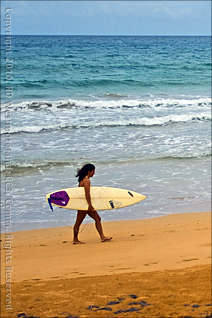 WEATHER: The weather in PR is typical of the Caribbean. It only varies a few degrees year round and it’s a lot cooler up in the mountains. Its not uncommon to be clear in the morning and rain in the late afternoons. The North side gets more rain than the South side. In fact, the South is quite dry (but hot), the price you pay for living down by the ocean.
WEATHER: The weather in PR is typical of the Caribbean. It only varies a few degrees year round and it’s a lot cooler up in the mountains. Its not uncommon to be clear in the morning and rain in the late afternoons. The North side gets more rain than the South side. In fact, the South is quite dry (but hot), the price you pay for living down by the ocean. 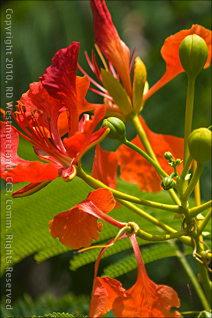 The Hurricane Season is from about mid June until the end of November. Fortunately, most folks from elsewhere take their vacations in the winter… it all works out. Here’s a tip- When Puerto Ricans take a vacation, they usually go to the Mountains or the West end of the island. Freshwater fishing and clean air up in the ‘hills’ or the great beaches and seafood around Rincon or Cabo Rojo are very popular. My favorite time of the year is late June and July… The Flamboyans are in full bloom and everything is bright green. Plus, it’s still too early to really think about hurricanes.
The Hurricane Season is from about mid June until the end of November. Fortunately, most folks from elsewhere take their vacations in the winter… it all works out. Here’s a tip- When Puerto Ricans take a vacation, they usually go to the Mountains or the West end of the island. Freshwater fishing and clean air up in the ‘hills’ or the great beaches and seafood around Rincon or Cabo Rojo are very popular. My favorite time of the year is late June and July… The Flamboyans are in full bloom and everything is bright green. Plus, it’s still too early to really think about hurricanes.
PASSPORTS: For Americans traveling to Puerto Rico, it’s very easy. PR is a territory of the USA so no passports are needed if you fly directly back and forth between the mainland and the island. If on the other hand, you will be joining a Cruise with ‘Ports of Call’ outside Puerto Rico, then yes, you will need one. Visitors on holiday from other countries will need their respective passports too.
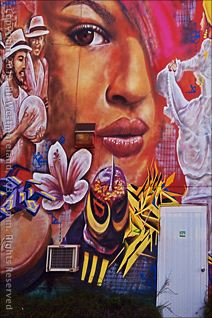 LANGUAGE: Though Spanish IS the local language, as long as you stay in the main tourist areas of San Juan, Fajardo, Ponce, Cabo Rojo, Mayaguez and Rincon, you should always be able to find someone who speaks English. Once you get outside the big cities and into the hills, it’s a different story…
LANGUAGE: Though Spanish IS the local language, as long as you stay in the main tourist areas of San Juan, Fajardo, Ponce, Cabo Rojo, Mayaguez and Rincon, you should always be able to find someone who speaks English. Once you get outside the big cities and into the hills, it’s a different story… 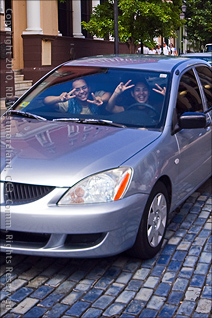 Speak some Spanish or carry those silly little cards you can point to. Many cops outside the big towns do not speak English. I rode the bus from my hotel in Isla Verde (in Carolina) to Old San Juan twice and always found someone who spoke English to chat with. Most folks are very friendly… I like that about Puerto Rico. As a rule, most Puerto Ricans love the opportunity to practice their English. There are many locals who once lived on the mainland with lots of retired military as well.
Speak some Spanish or carry those silly little cards you can point to. Many cops outside the big towns do not speak English. I rode the bus from my hotel in Isla Verde (in Carolina) to Old San Juan twice and always found someone who spoke English to chat with. Most folks are very friendly… I like that about Puerto Rico. As a rule, most Puerto Ricans love the opportunity to practice their English. There are many locals who once lived on the mainland with lots of retired military as well.
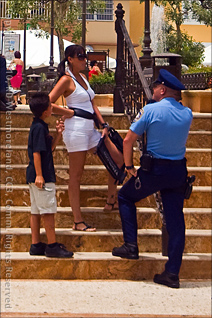 SAFETY: The same rules apply here as they do at home. Stay to the tourist areas and you will not have any problems. San Juan’s hotel district in Condado, Carolina and Old San Juan are well patrolled, 24 hours a day. The Plazas of all the towns I’ve visited seemed safe to me. I felt safer in Old San Juan than I did in Honolulu (and its cheaper too). I wrote in more detail about good safe practices in this article about photography. Common sense is the rule of the day.
SAFETY: The same rules apply here as they do at home. Stay to the tourist areas and you will not have any problems. San Juan’s hotel district in Condado, Carolina and Old San Juan are well patrolled, 24 hours a day. The Plazas of all the towns I’ve visited seemed safe to me. I felt safer in Old San Juan than I did in Honolulu (and its cheaper too). I wrote in more detail about good safe practices in this article about photography. Common sense is the rule of the day.
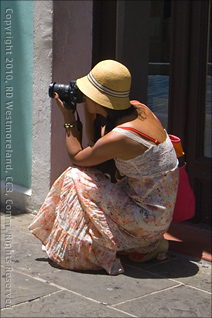 CELL PHONES: You will not have any issues with your cell phones as long as you stick near the coast and major highways. Inland is another issue. AT&T does not fare as well as Verizon (Claro in PR), up in the central mountains, but at some point they all fail. Wireless Internet will only work in the main metro areas. Almost all hotels have Internet service, but I would ask about it if it’s something you have to have. Hanging out at the ‘Business Center’ of the hotel to send an email sux. Also worth noting, the Plazas of all towns (big or small) have wireless Internet. It’s very common to see locals sitting on benches, surfing the Net from a Netbook, cell phone or iPad since Wifi is free.
CELL PHONES: You will not have any issues with your cell phones as long as you stick near the coast and major highways. Inland is another issue. AT&T does not fare as well as Verizon (Claro in PR), up in the central mountains, but at some point they all fail. Wireless Internet will only work in the main metro areas. Almost all hotels have Internet service, but I would ask about it if it’s something you have to have. Hanging out at the ‘Business Center’ of the hotel to send an email sux. Also worth noting, the Plazas of all towns (big or small) have wireless Internet. It’s very common to see locals sitting on benches, surfing the Net from a Netbook, cell phone or iPad since Wifi is free.
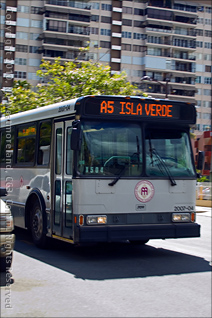 ACCOMMODATIONS: If you are the typical American tourist looking for the same level of comfort you get back in the USA, then you need to stay in San Juan or maybe Ponce. All the regular chains have hotels in San Juan. Gambling is legal on the island so most hotels have their own casinos.
ACCOMMODATIONS: If you are the typical American tourist looking for the same level of comfort you get back in the USA, then you need to stay in San Juan or maybe Ponce. All the regular chains have hotels in San Juan. Gambling is legal on the island so most hotels have their own casinos. 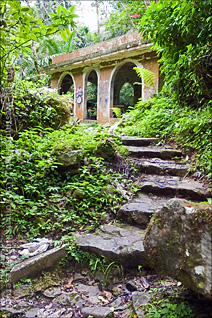 If you are more adventurous, then there are lots of alternatives. Locally owned ‘Mom ‘n Pop’ hotels are everywhere. I stayed in one such hotel while in San Juan, The Coqui Inn and loved it, but you might not. Paradores are popular with the locals and there are a few Motels scattered across the island, but they are really used for ‘one-night-stands’ and ‘afternoon quickies’. Most rent out by the 8 hour block. Very discreet as most feature private garage parking so no one can see you come and go. There is also limited camping capability, but it’s not considered safe to do in small groups and requires advanced registration for most locations.
If you are more adventurous, then there are lots of alternatives. Locally owned ‘Mom ‘n Pop’ hotels are everywhere. I stayed in one such hotel while in San Juan, The Coqui Inn and loved it, but you might not. Paradores are popular with the locals and there are a few Motels scattered across the island, but they are really used for ‘one-night-stands’ and ‘afternoon quickies’. Most rent out by the 8 hour block. Very discreet as most feature private garage parking so no one can see you come and go. There is also limited camping capability, but it’s not considered safe to do in small groups and requires advanced registration for most locations.
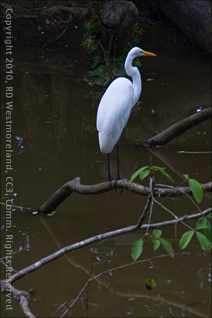 HEALTH CONSIDERATIONS: You can always get prescription meds re-filled here, but its a pain if you don’t speak Spanish or deal directly with Walgreen’s. There are NO deadly critters on the island and if you stay to the main tourist areas you have absolutely nothing to worry about.
HEALTH CONSIDERATIONS: You can always get prescription meds re-filled here, but its a pain if you don’t speak Spanish or deal directly with Walgreen’s. There are NO deadly critters on the island and if you stay to the main tourist areas you have absolutely nothing to worry about. 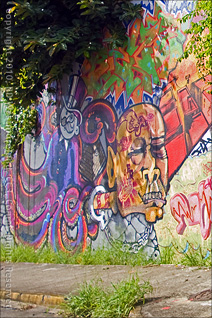 Most hazardous animals are nocturnal.. you will never see them. If you are prone to reaction (anaphylactic shock), then bring an extra syringe for emergencies.
Most hazardous animals are nocturnal.. you will never see them. If you are prone to reaction (anaphylactic shock), then bring an extra syringe for emergencies.
Mosquitoes can carry ‘Dengue’ (like Ben-gay) known as “Break-bone Fever”. So use bug dope when out in the woods and you’ll be fine, really. I live rural and its not a big issue. I often take odorless garlic gel-caps before I head out. Dengue is common to PR, the Caribbean and Latin America.
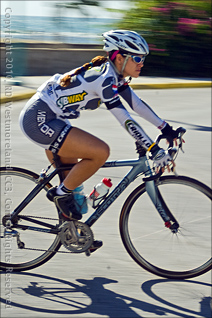 PUBLIC TRANSPORTATION: Or lack of it would be a better call. From within San Juan, there are regularly scheduled public buses that run from the hotel areas in Condado or Carolina to the Old San Juan Bus Terminal. Ask at the front desk and they will tell you which bus to get on and where. Bus stops are rather nondescript, nor is there a posted schedule. Fortunately, the terminal in
PUBLIC TRANSPORTATION: Or lack of it would be a better call. From within San Juan, there are regularly scheduled public buses that run from the hotel areas in Condado or Carolina to the Old San Juan Bus Terminal. Ask at the front desk and they will tell you which bus to get on and where. Bus stops are rather nondescript, nor is there a posted schedule. Fortunately, the terminal in 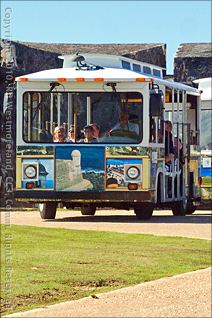 Old San Juan puts you right in the middle of things. I felt safe on the public bus.. lots of local folks of all ages were riding it. Most small towns including Old San Juan, Ponce and Mayaguez maintain shuttle buses that run in and out of the main plaza. These are free and many are air-conditioned. You can always hail a cab, but San Juan is a huge place-
Old San Juan puts you right in the middle of things. I felt safe on the public bus.. lots of local folks of all ages were riding it. Most small towns including Old San Juan, Ponce and Mayaguez maintain shuttle buses that run in and out of the main plaza. These are free and many are air-conditioned. You can always hail a cab, but San Juan is a huge place- 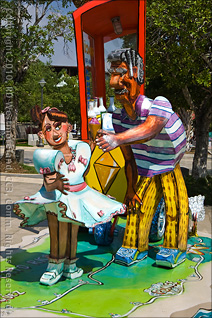 Always insist on a price in advance or you’ll likely get stiffed. They seldom drop a ‘flag’. The ‘Tren Urbano’ mass transit system serves Metro San Juan, the main university and the main hospital, but not the tourist areas. Outside of San Juan, there are only small privately owned ‘Publicos’. These are ‘one-man vans’ running to only one destination. What’s more, you have to get there early to get a ride to where ever you are going and if it don’t fill up with riders, they may not go at all. Publicos are a Puerto Rican tradition from years past. They are fine if you are not in a hurry and speak Spanish. DOH! Renting a car or jeep is your best, most practical option. A ferry service provides access to Vieques and Culebra from the docks in Fajardo. They make the run on a daily basis.
Always insist on a price in advance or you’ll likely get stiffed. They seldom drop a ‘flag’. The ‘Tren Urbano’ mass transit system serves Metro San Juan, the main university and the main hospital, but not the tourist areas. Outside of San Juan, there are only small privately owned ‘Publicos’. These are ‘one-man vans’ running to only one destination. What’s more, you have to get there early to get a ride to where ever you are going and if it don’t fill up with riders, they may not go at all. Publicos are a Puerto Rican tradition from years past. They are fine if you are not in a hurry and speak Spanish. DOH! Renting a car or jeep is your best, most practical option. A ferry service provides access to Vieques and Culebra from the docks in Fajardo. They make the run on a daily basis.
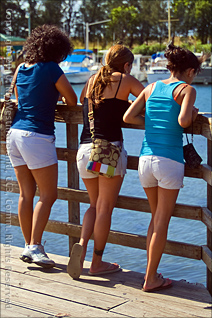 DRESS: Dress is always casual. Temps are in the mid to high -80’sF during the heat of the day. And in the low -90’s on the South side of the island. Sandals, shorts and tank tops are very common as is jeans and polo shirts.
DRESS: Dress is always casual. Temps are in the mid to high -80’sF during the heat of the day. And in the low -90’s on the South side of the island. Sandals, shorts and tank tops are very common as is jeans and polo shirts. 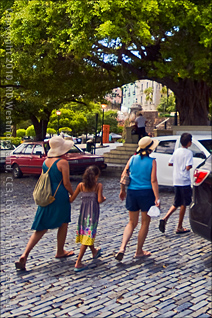 The more ritzy hotels and restaurants will have formal dress codes, especially at dinner hour. When walking on Old San Juan’s 500 year old cobble stone streets, good shoes are in order. ‘Stylish’ heels might cost you a twisted ankle. A hat is a good idea if you will be out and about during mid-day. Its also possible to be caught out in an afternoon down pour so a small umbrella or ‘rain-slick’ is a good idea too.
The more ritzy hotels and restaurants will have formal dress codes, especially at dinner hour. When walking on Old San Juan’s 500 year old cobble stone streets, good shoes are in order. ‘Stylish’ heels might cost you a twisted ankle. A hat is a good idea if you will be out and about during mid-day. Its also possible to be caught out in an afternoon down pour so a small umbrella or ‘rain-slick’ is a good idea too.
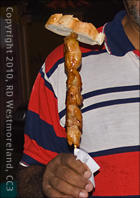 EATS: Puerto Rico has all the fast food chains most Americans are familiar with and a couple more. Do not expect the same ‘fast’ service you are used to, Puerto Rico runs at its own pace.
EATS: Puerto Rico has all the fast food chains most Americans are familiar with and a couple more. Do not expect the same ‘fast’ service you are used to, Puerto Rico runs at its own pace.  If you have not tried Pollo Tropical, you should. Think up-scale Taco Bell with a Caribbean twist. It’s my favorite. I have not been to McDonalds or Burger King since I moved here. Restaurants in the main tourist areas are many and varied just like back home.
If you have not tried Pollo Tropical, you should. Think up-scale Taco Bell with a Caribbean twist. It’s my favorite. I have not been to McDonalds or Burger King since I moved here. Restaurants in the main tourist areas are many and varied just like back home. 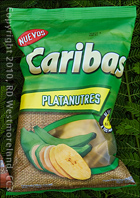 I was surprised to see a big helping of french fries served with every meal, at every Chinese Restaurant I’ve been to. It’s a local thing. Authentic Puerto Rican dishes are similar to other Caribbean fare, but not quite as spicy hot. Its all good so dive in! If you manage to take a road trip, I recommend stopping at a ‘Pincho’ stand and try one of their roasted chicken or pork skewers. Hopefully they will be set-up next to an outside bar where you can wash it down with a Medalla Lite beer (Brewed in Mayaguez). It’s pretty good too.
I was surprised to see a big helping of french fries served with every meal, at every Chinese Restaurant I’ve been to. It’s a local thing. Authentic Puerto Rican dishes are similar to other Caribbean fare, but not quite as spicy hot. Its all good so dive in! If you manage to take a road trip, I recommend stopping at a ‘Pincho’ stand and try one of their roasted chicken or pork skewers. Hopefully they will be set-up next to an outside bar where you can wash it down with a Medalla Lite beer (Brewed in Mayaguez). It’s pretty good too.

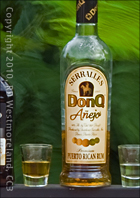 DRINK: If you drink water, make sure its bottled AND that the cap is intact. Tap water is OK. It’s simply loaded with chlorine and heavy with minerals. We use a reverse osmosis system for drinking water at home.
DRINK: If you drink water, make sure its bottled AND that the cap is intact. Tap water is OK. It’s simply loaded with chlorine and heavy with minerals. We use a reverse osmosis system for drinking water at home.
Another good reason for drinking beer! At least you know its not been tampered with. The drinking age is 18.. I’m surprised this place has not become a hot spot with the ‘Spring Break’ crowd. Drinking in public is banned in Old San Juan, but open in most other places. Puerto Rico is home to several RUM distilleries  so it would be sad to pass on trying a few of the local concoctions. I have an article about RUM for those that are interested. Don Q is the favored Rum since they are local. If you prefer something else, you’ll need to speak up. Bacardi has a big presence as well. Roadside bars are very common in Puerto Rico and most allow you to sit outside where its cooler. Hopefully, the Pincho guy is right next door. Most roadside bars are not open during the week, only on the weekends. As far as the nightlife goes, San Juan runs non-stop, 24 hours a day. There’s something for everyone.
so it would be sad to pass on trying a few of the local concoctions. I have an article about RUM for those that are interested. Don Q is the favored Rum since they are local. If you prefer something else, you’ll need to speak up. Bacardi has a big presence as well. Roadside bars are very common in Puerto Rico and most allow you to sit outside where its cooler. Hopefully, the Pincho guy is right next door. Most roadside bars are not open during the week, only on the weekends. As far as the nightlife goes, San Juan runs non-stop, 24 hours a day. There’s something for everyone.
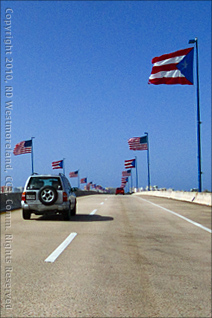 DRIVING AND ROADS: Since PR is a territory of the United States, they drive on the same side of the road as the rest of the US. Your US Driver’s License is good for up to 120 days. They also recognize International Driver’s Licenses as well.
DRIVING AND ROADS: Since PR is a territory of the United States, they drive on the same side of the road as the rest of the US. Your US Driver’s License is good for up to 120 days. They also recognize International Driver’s Licenses as well. 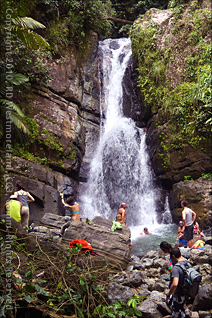 A lot is said about those ‘Crazy Puerto Rican Drivers”. I think New York cabbies are way worse. San Juan, with 2 million people has 2 million plus cars so its real crowded and parking is almost always a problem, no matter where you go. THE busiest time to be on the road is between 3:00PM and 4:30 PM. All local and state government offices AND schools let out at between 3:15PM to 3:30PM. Traffic grinds to a stop, when mom comes to pick up the kids from school. If you plan on renting a car, make sure your hotel has off street parking.
A lot is said about those ‘Crazy Puerto Rican Drivers”. I think New York cabbies are way worse. San Juan, with 2 million people has 2 million plus cars so its real crowded and parking is almost always a problem, no matter where you go. THE busiest time to be on the road is between 3:00PM and 4:30 PM. All local and state government offices AND schools let out at between 3:15PM to 3:30PM. Traffic grinds to a stop, when mom comes to pick up the kids from school. If you plan on renting a car, make sure your hotel has off street parking. 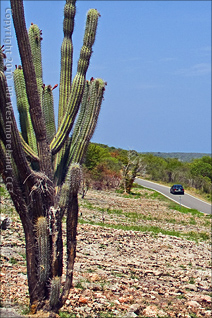 Some hotels charge their patrons for it, some have no parking at all. Car rental is more expensive here than most other places and your own car insurance may not cover you while in Puerto Rico adding more to the cost. Check with your insurance company first
Some hotels charge their patrons for it, some have no parking at all. Car rental is more expensive here than most other places and your own car insurance may not cover you while in Puerto Rico adding more to the cost. Check with your insurance company first 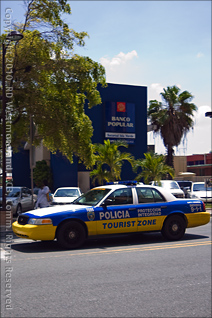 AND get something in writing too or they will not allow it once you get here. A GPS unit will go a long ways in keeping you on track. I still use one, but bear in mind, some don’t cover Puerto Rico. Tip: Looking at maps marks you as a mark. Don’t do it in a public place, unless it’s relatively private. Road signs are another issue. There’s a real lack of them and they are in Spanish. Not a big deal since they use shapes and colors, we in the US are familiar with. Speed limit signs are in miles-per-hour, but road signs are in kilometers (distance to..). The roads off the few main highways are paved, but pretty bad. When they do road work, the patches that follow are almost always poorly done.
AND get something in writing too or they will not allow it once you get here. A GPS unit will go a long ways in keeping you on track. I still use one, but bear in mind, some don’t cover Puerto Rico. Tip: Looking at maps marks you as a mark. Don’t do it in a public place, unless it’s relatively private. Road signs are another issue. There’s a real lack of them and they are in Spanish. Not a big deal since they use shapes and colors, we in the US are familiar with. Speed limit signs are in miles-per-hour, but road signs are in kilometers (distance to..). The roads off the few main highways are paved, but pretty bad. When they do road work, the patches that follow are almost always poorly done. 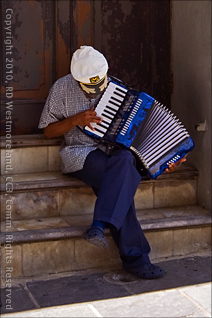 That is why you see sooo many folks zig-zagging around.. trying to avoid the crap in the road. Driving in PR is NOT a casual experience, you got to stay on your toes. Yes, its not unusual to see a Puerto Rican absorbed in his/her cell phone while dodging pot holes.
That is why you see sooo many folks zig-zagging around.. trying to avoid the crap in the road. Driving in PR is NOT a casual experience, you got to stay on your toes. Yes, its not unusual to see a Puerto Rican absorbed in his/her cell phone while dodging pot holes.
You been warned.
MONEY AND ATMs: American greenbacks rule. Banco Popular’s ATHs (ATM) are your best shot at drawing cash 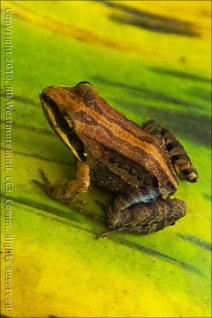 from your debit or credit cards. Most transactions will cost you something. Very few, if any gas stations accept cards, cash only and paid in advance. Gasoline is dispensed in Liters so its not near as cheap as it looks at first glance.
from your debit or credit cards. Most transactions will cost you something. Very few, if any gas stations accept cards, cash only and paid in advance. Gasoline is dispensed in Liters so its not near as cheap as it looks at first glance.
TOUR COMPANIES: My suggestion is to talk to your hotel desk and ask them for ideas. From San Juan, there are many 1/2 day and full day excursions. If you are on a tight schedule, this is the way to go. I did a 1/2 day trip to El Yunque from San Juan on my first visit and it was worth it.
PR Emergency Numbers:
• Emergencies: 911
• Police: 787-343-2020
• Ambulance: 787-343-2222
• Civil Defense: 787-724-0124
• Fire Department: 787-343-2330
• F.B.I: 787-754-6000
• U.S. Secret Service: 787-766-5539
• U.S. Coast Guard: 787-729-6770
• Abuse of Minors: 787-749-1333
• American Red Cross Blood Bank: 787-759-7979
• Federal Marshals: 787-766-6000
• Federal Secret Service: 787-766-5539
• Federal Emergency Management Agency (FEMA): 787-729-7637
• Humane Society of Puerto Rico: 787-720-9398
• Tourist Information: 787-722-1709
• Toxic, chemical and oil spills: 1-800-424-8802
Most Federal and State level personnel speak English,
but understand that English may not be that person’s
first language. Always talk in a calm, clear voice.
I’ll add more tips as they come to me, if you see errors, hit me back.
Be safe, be vigilant, but get out there. The Scurvy Dog… Arrg!